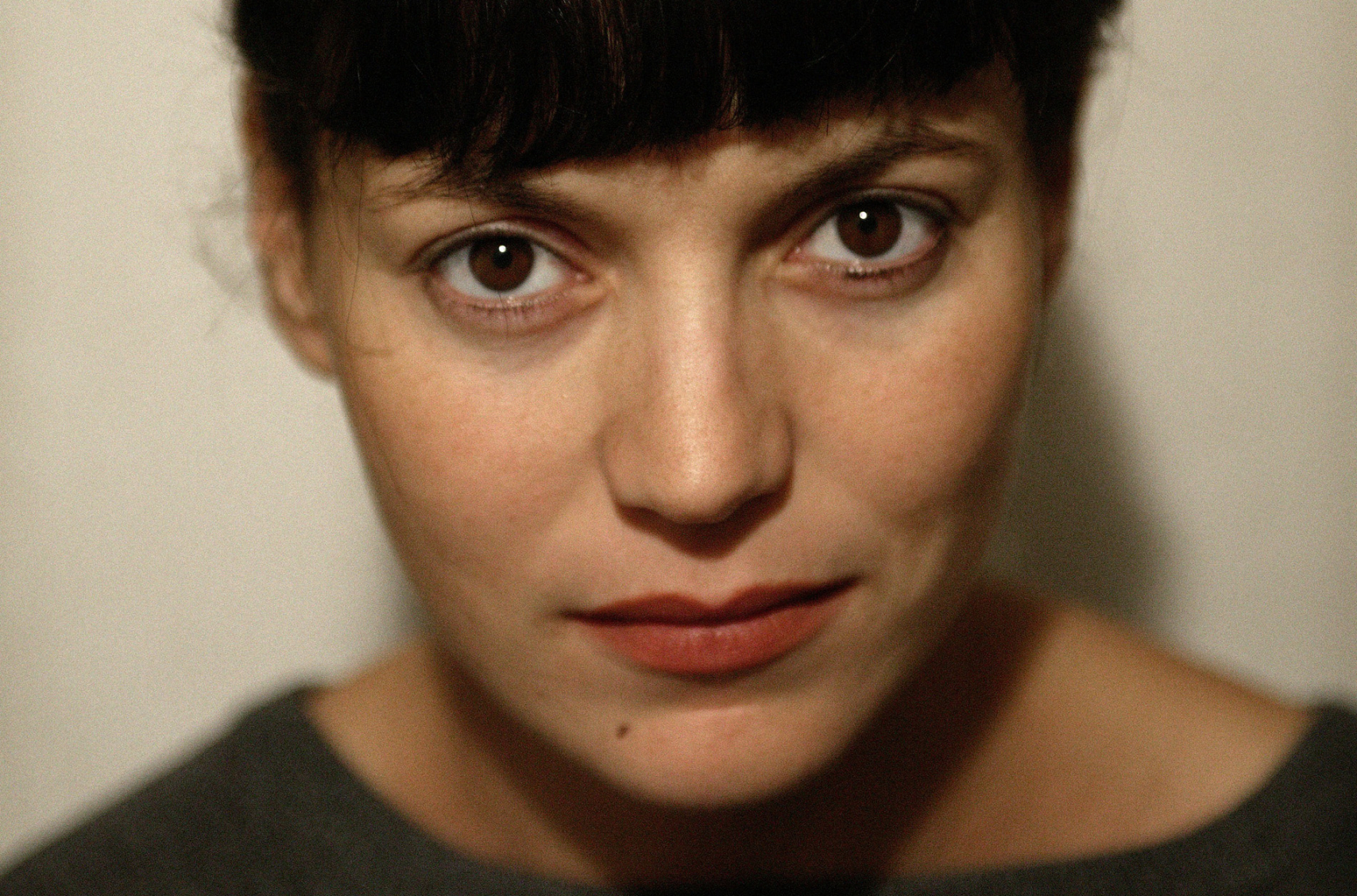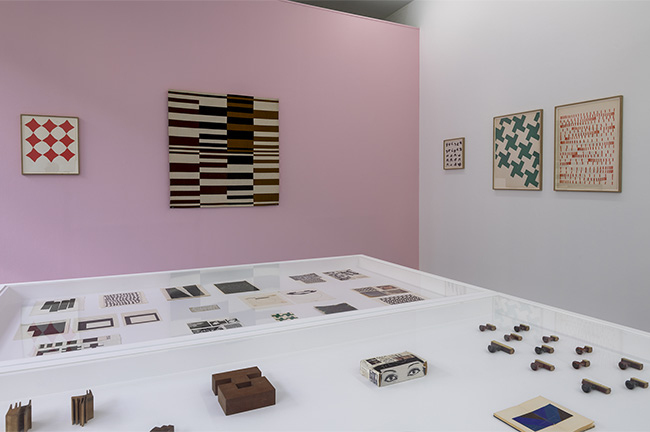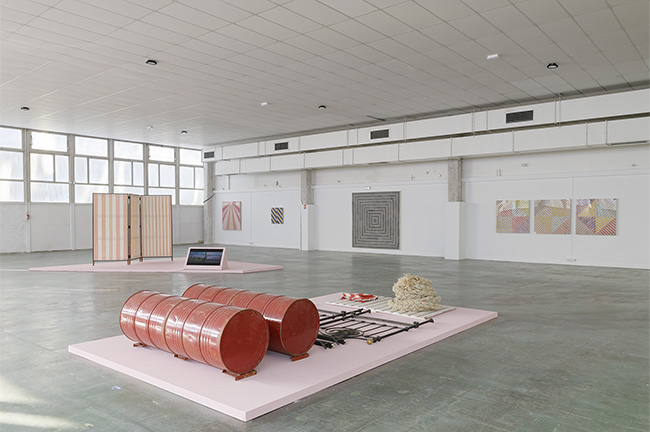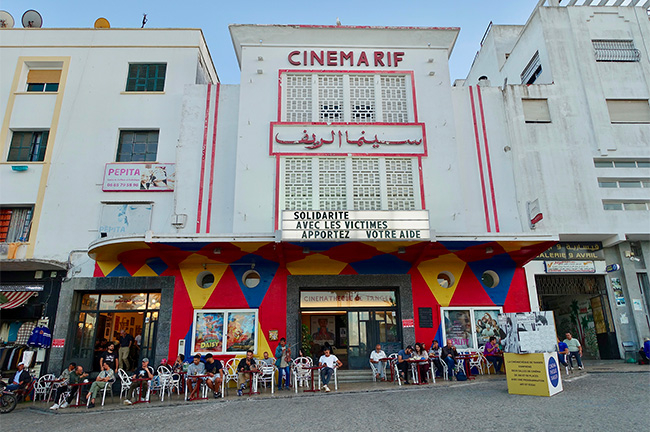Yto Barrada is the Visual Arts guest at the Festival d’Automne. Born in 1971 in Paris and living between Tangier and New York, she returns to Paris with a three-part invitation: Solidité lumière, Balcon Bettina and Carte blanche Cinémathèque de Tanger. Here she is interviewed by Clément Dirié, curator and art critic.
What is more important to you: rules or games?
Games without rules and rules without games! Rules interest me when they act as obstacles and enable you to jump, pass underneath, take a step aside, or fall. Rules create a kind of construction in space for thought to lean against, a bit like these young men, the hitists, who spend – involuntarily – most of their day leaning against the walls of the major cities. I photographed them a lot in Tangier.
You like working with rules.
I like to lean on something that already exists, something which been found, a word, an expression, a story. The advantage of giving yourself rules is that it is possible to escape them. I like constraints. I actually have much more freedom when I have constraints. In any case, I do not think absolute freedom really exists. There is always a time, a deadline, a place. For me, projects are porous and take time. I would like to be able to unfurl them but in way which never fixes them, or sets them in stone.
The first notions that come to mind when referring to your work are those of learning, know-how, and return to tradition. Nevertheless, it seems that what interests you most is to position yourself at the level of the objects, gestures, and names themselves. In other words, that of material culture, the sensory.
Absolutely. It is about putting yourself on the same level with the words and language. Being a foreigner – which is my case here in New York – is a way of noticing things much more. There is a pervasiveness of all those things that are silent when you are at home but which then become noisy, and visible because they are foreign to you. For me, material culture goes hand in hand with language. By studying the way fabrics, or colours, are made, new words constantly appear. My daily life as an artist is about learning all the time: techniques, recipes, ways of weaving, the precise vocabulary of a craft or a science, or a conversation with Marcel Bénabou, a member of Oulipo. I can use almost anything as my launch-pad. It is a question of creating echoes, and establishing relationships between universes, vocabularies. My interest in language lies in its ability to make us think things that were previously unthinkable, and to give substance to material, tactile, poetic solutions.
You like to describe the role of the artist in terms of this ability to unfurl and connect things together.
This is very definitely its superpower. The artist is constantly making connections, just like a child. It is about establishing relationships between worlds, and creating free associations that make sense. These links between things form an invisible web, a pre-existing protective net that you activate. It is similar to how the philosopher Hartmut Rosa describes the "pedagogy of resonance", by evoking the smile that lights up a child's face when they suddenly understand something that they could not do beforehand. I cherish these magical moments when things start to make sense, almost in spite of yourself but definitely for you.
You do not just learn. You also put in place tools, collective ones, in order to satisfy your curiosity. I am thinking of the Cinémathèque de Tangier and The Mothership. Why create such places?
It is a trick which enables me to see these mechanisms through to their end, by committing myself publicly. If I only doing something for myself, I can easily cancel it. Sometimes the conceptualization of a project is more interesting than its implementation. After the Cinémathèque de Tangier that I co-founded in 2006, we recently created The Mothership, a laboratory-residency organized around a garden of dye plants. It is a place for imagining collective solutions to issues related to ecofeminism, the preservation of shared know-how, the very particular biodiversity of this border area between the Mediterranean and the Atlantic, collection and cataloguing. Unlike the colonial campaigns the aims of which were to exploit the territory, our objective is to make an inventory of what we have lost. The motto of The Mothership could be this phrase by the Mojave poet Natalie Diaz: “the future is indigenous”.
At the other end of the line is New York, and more specifically Room 503 at the Chelsea Hotel, where the artist Bettina lived for nearly five decades.
Although a recluse at the Chelsea Hotel, Bettina (1927-2021) had travelled extensively. She had made sense of the absurdity of the world by finding a space of her own in which to live and create. The first thing that won me over about her was her scathing humor and awareness of her own worth. I then discovered her anger, family history as the daughter of Jewish emigrants from Galicia (the former Austro-Hungarian Empire), and desire to get away from her environment. There was also the explosion represented, in 1966, by the burning down of her studio and in which everything disappeared. She decided to reinvent herself, settled in the hotel and started again from scratch. My meeting with Bettina is also the discovery of the work of an incredible autodidact, worth that of all the artists of her generation. Obviously, there are many similarities between our two practices. In my studio in New York, I work surrounded by her works and boxes of archives.
To finish up, a game which is also a rule. Here are two expressions to which you must find answers very quickly. Estrapade mosquito?
This is my stripper name if you follow this rule of adding the name of your first pet to the address of your birth. Mosquito was the name of my dog, who died of rabies. I was born on Rue de l'Estrapade in Paris – a ten-minute walk from my exhibition Solidité lumière at Césure. I love fancy dress, costumes, taxonomy, and the power of names and identities that we choose for ourselves.
Secondly: "false guide".
Bettina was the false guide of New York and I am the false guide of Tangier. The false guide is this magnificent, creative and disturbing rascal, who invents his own economy, and who must convince in fifteen minutes flat the tourists who disembark from the bus or ferry and want a shot of authenticity. At the moment, I am thinking about a performance consisting of a daily visit to my exhibitions that would be different each time: a political and material tour on Monday, an "abstraction" tour on Tuesday, a chromatic and decorative tour on Wednesday, a "language and poetry" tour on Thursday, and a "sounds and smells" tour on Friday, etc. The different guides would have to draw lots for the theme of each tour and then stick to it. Maybe this is what we should do for the Festival d’Automne.
Interview by Clément Dirié, April 2023




